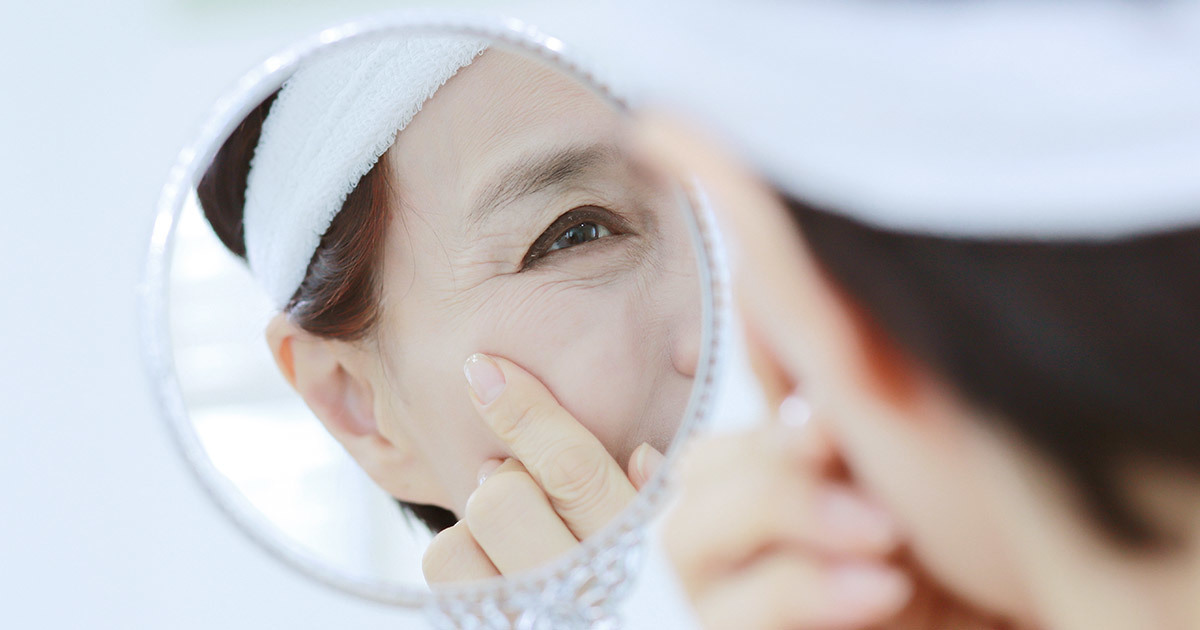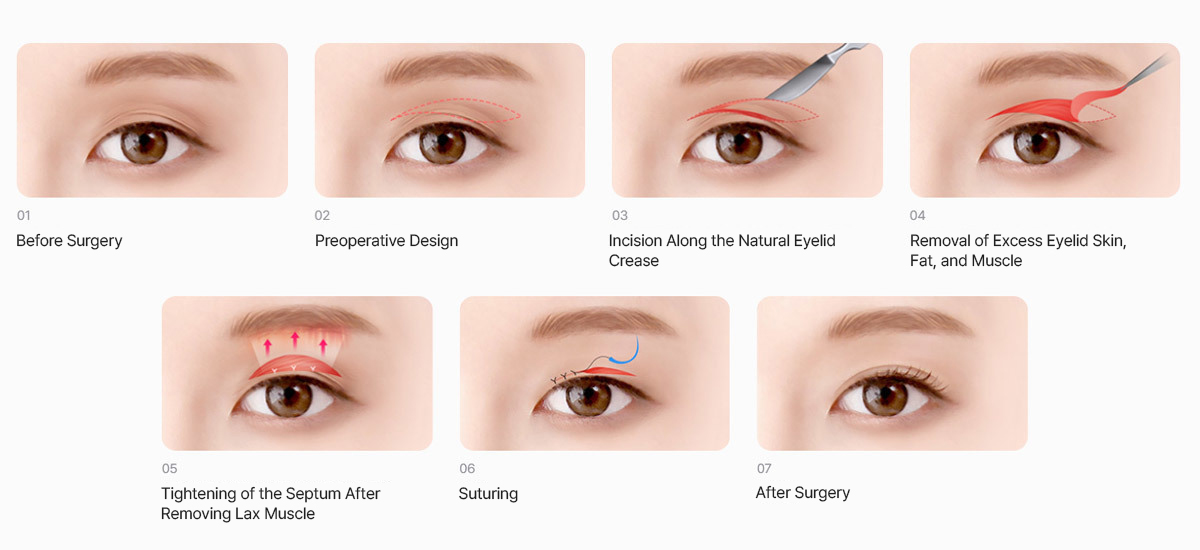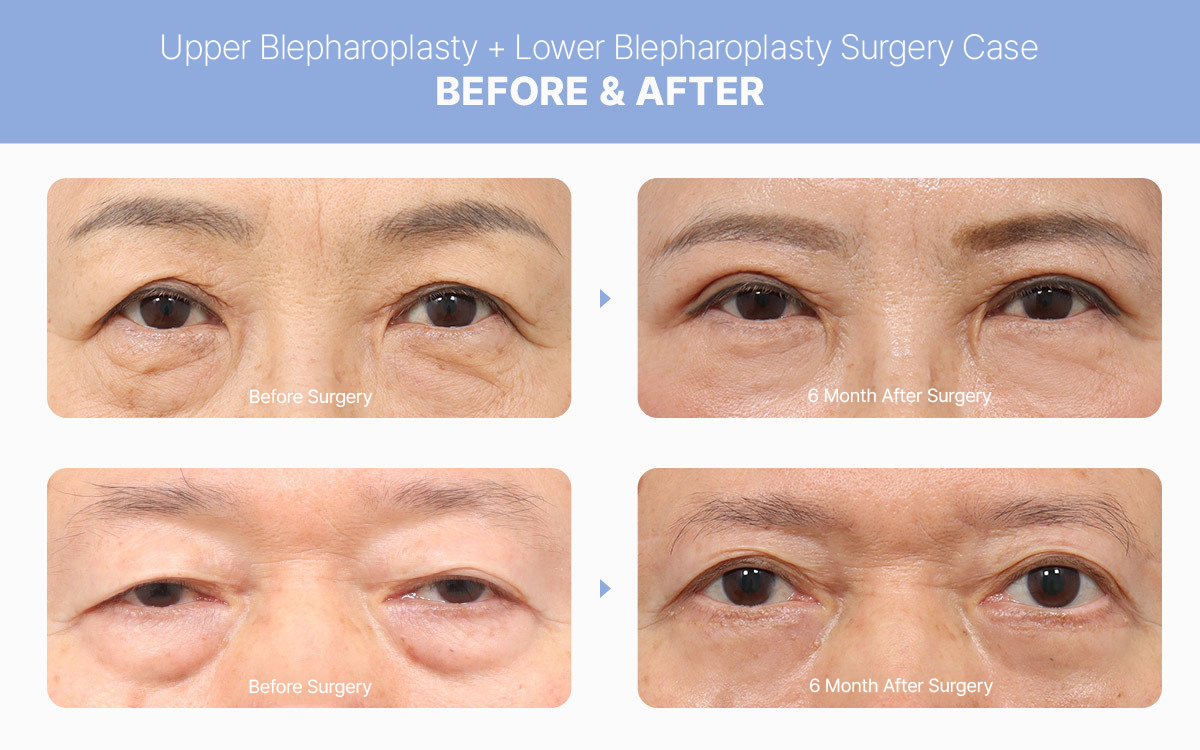Title
Safe Upper Eyelid Surgery Without ComplicationsDate
2025-11-24Views
237
Medical Column

Greetings. This is Dr. Ahn Mun-Yeong, board certified plastic surgeon at AB Plastic Surgery.
As age progresses, drooping of the upper eyelids is a natural change that can occur in many individuals. This condition affects more than appearance alone, often creating a sleepy expression, a heavy or tired look, and in some cases functional issues such as visual field obstruction or deepening of forehead creases.
When the upper eyelids descend, the eyes may appear smaller and more fatigued, which can influence the overall impression. As this change becomes more pronounced, the forehead muscles are frequently used to elevate the eyelids, eventually leading to deeper forehead lines.
In such cases, upper eyelid surgery provides an effective solution to enhance the eye shape while also addressing functional discomfort.
The following guide offers essential information for those considering upper eyelid surgery, including expected costs, potential complications, and recovery details, presented in a clear and accessible manner.
Q. What Is Upper Blepharoplasty? (Upper Eyelid Surgery Explained)

Upper blepharoplasty also known as upper eyelid surgery, upper eyelid lift, or upper eyelid rejuvenation is a procedure that removes sagging skin and corrects droopy eyelids caused by aging. As the eyelid skin stretches and the levator muscle weakens, the eyes may look tired, heavy, or smaller, sometimes even affecting the visual field.
This surgery restores a brighter, more youthful, and more open eye shape, and also improves functional issues such as visual obstruction.
Q. Who Needs Upper Blepharoplasty?
Patients commonly consider upper eyelid surgery when they experience:
• Sagging or hanging upper eyelid skin
• Eyelids that look sleepy or tired
• Eyes appearing smaller with age
• Deepening forehead wrinkles due to brow lifting
• Functional vision disturbance
• Difficulty applying makeup (eyeliner/sagging crease)
These are key indicators of upper eyelid aging, making upper blepharoplasty an effective long term solution.
Q. How Upper Blepharoplasty Is Performed at AB Plastic Surgery

At AB Plastic Surgery, the goal is natural, harmonious eyelid rejuvenation without an overcorrected look.
Key elements of our surgical technique include:
• Minimal yet precise tissue removal
- Removes only unnecessary skin and fat, preserving natural eyelid structure.
• Levator muscle adjustment (ptosis correction if needed)
- Improves drooping by strengthening eyelid lifting power.
• Incision hidden in the natural crease
- Reduces visible scarring, ideal for natural Asian eyelid anatomy.
• Customized approach based on eyelid thickness, crease height, and muscle condition
- Ensures the most balanced, individualized result.
Q. Upper Blepharoplasty Recovery Timeline (What to Expect)

The postoperative course is generally fast and predictable:
Day 1-3
• Swelling and bruising peak
• Cold compresses recommended
Day 4-7
• Swelling begins to decrease
• Most patients return to daily activities
Week 2-4
• Incision line continues to fade
• Warm compresses support healing
Long-term
• Scar becomes nearly invisible in eyelid crease
• Eyelid shape stabilizes with a natural contour
Upper blepharoplasty generally has a relatively quick recovery, although the healing process can vary depending on individual characteristics and the extent of the procedure.
In most cases, bruising and swelling decrease significantly within one week after surgery, and applying cold compresses during the early recovery period is important for reducing swelling. Immediately after the procedure, a temporary feeling of heaviness in the eyes or tension in the forehead may occur, which is a normal response. Swelling typically reaches its peak around two to three days after surgery and gradually subsides afterward.
As recovery progresses, switching from cold compresses to warm compresses can further support the healing process. Avoiding positions that involve bending the head downward and sleeping with the head elevated can also help reduce postoperative swelling.
Because the incision is made along the natural crease of the eyelid, the resulting scar becomes increasingly inconspicuous over time. Consistent postoperative care in accordance with medical guidance can contribute to a faster and safer recovery.
Q. Possible Risks and Complications of Upper Blepharoplasty

All surgical procedures carry a certain level of potential complications, and upper blepharoplasty is no exception.
Possible complications may include asymmetry, scarring, excessive skin removal, temporary dryness of the eyes, or reduced sensation.
However, most complications related to upper blepharoplasty can be effectively prevented through thorough preoperative consultation, accurate diagnosis, and a meticulous approach by an experienced specialist.
Because the eyes are both the central feature of the face and an anatomically delicate area, it is essential to understand each individual’s structural characteristics and perform the procedure in a personalized manner.
Although upper eyelid surgery is considered safe, potential complications can include:
• Asymmetry
• Visible scarring
• Over removal of skin
• Temporary numbness
• Dry eyes
• Prolonged swelling
Most risks are minimized through:
• Detailed preoperative evaluation
• Comprehensive analysis of eyelid anatomy
• Experienced surgical technique
• Personalized surgical planning
Q. Should Upper Blepharoplasty and Lower Blepharoplasty Be Performed Together?

Many middle aged patients show aging in both upper and lower eyelids simultaneously.
Performing both surgeries together can provide:
• More balanced rejuvenation
• More dramatic overall eye improvement
• One recovery period instead of two
• Better cost efficiency
|
Category |
Upper Blepharoplasty |
Lower Blepharoplasty |
|
Indications |
Drooping of the upper eyelid, visual field obstruction |
Protrusion of lower eyelid fat, dark circles |
|
Incision Site |
Natural eyelid crease |
Minimal incision beneath the lower eyelid |
|
Recovery Period |
Bruising and swelling for about one week |
Bruising and swelling for about one week |
|
Scarring |
Concealed along the natural crease |
Minimal to none |
However, combined surgery is not recommended in all cases. The decision should be made by considering factors such as skin elasticity, eyelid function, and the expected healing capacity in a comprehensive manner. Planning the procedure through thorough consultation with a qualified specialist is essential.
Q. Is Upper Blepharoplasty Right for Middle Aged Patients?
For individuals in their 40s 60s experiencing noticeable eyelid aging, upper blepharoplasty offers:
• Natural eye opening
• More youthful appearance
• Correction of eyelid heaviness
• Improvement of vision obstruction
• Reduced forehead strain and wrinkles
It remains one of the most effective and popular procedures for middle aged eyelid rejuvenation.
This explanation has covered upper blepharoplasty for middle age eyelid rejuvenation. For those who would like to learn more about upper blepharoplasty, further inquiries are always welcome.
For additional inquiries regarding middle age eyelid rejuvenation upper blepharoplasty, please contact AB Plastic Surgery at +82-10-9674-1298 or reach out via WhatsApp using the same number to receive a detailed consultation.

|
Writer Dr. Ahn Mun-Yeong, AB Plastic Surgery |
#Middle_Age_Eyelids
#Rejuvenation _Surgery
#Upper_Blepharoplasty





